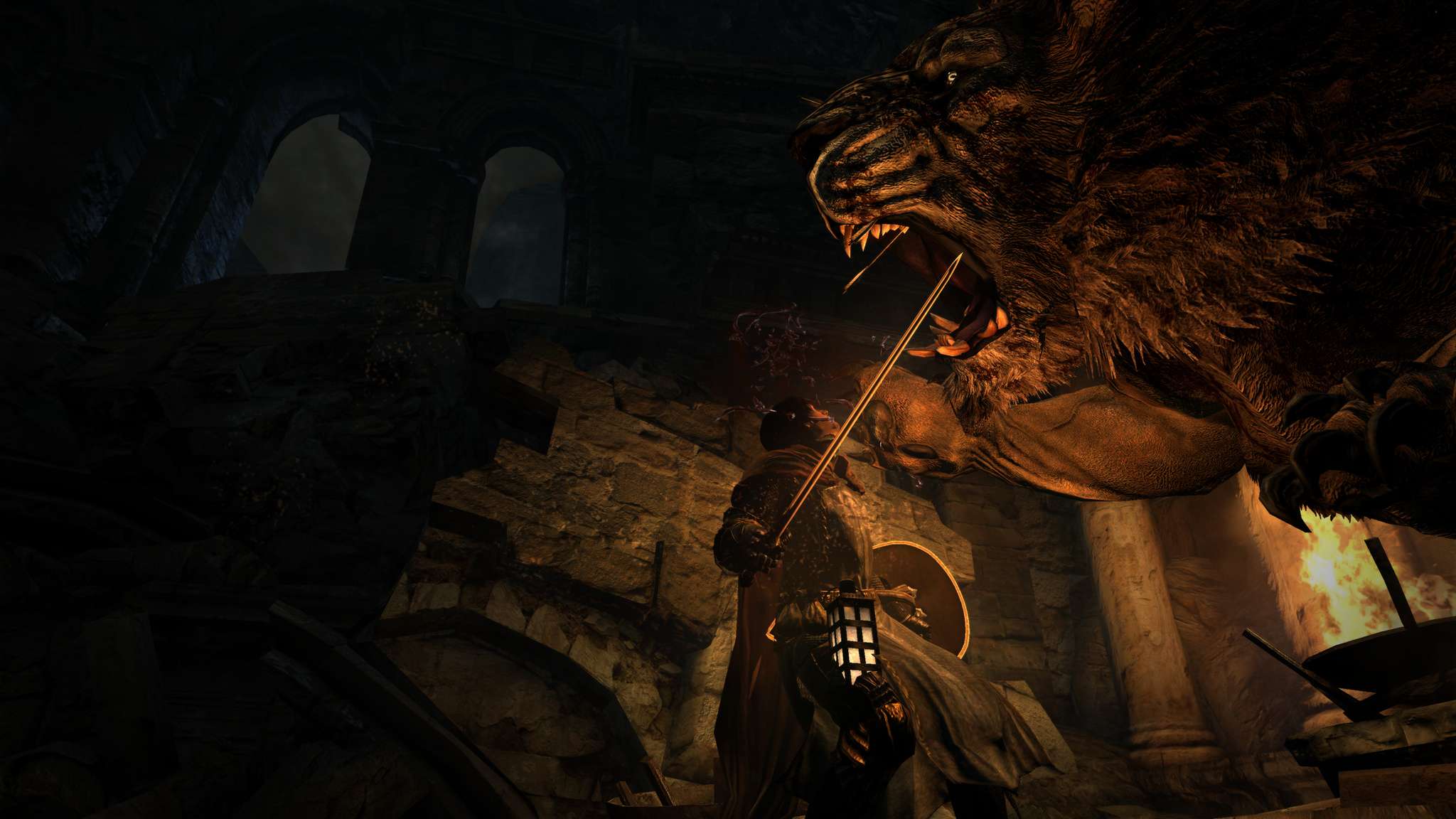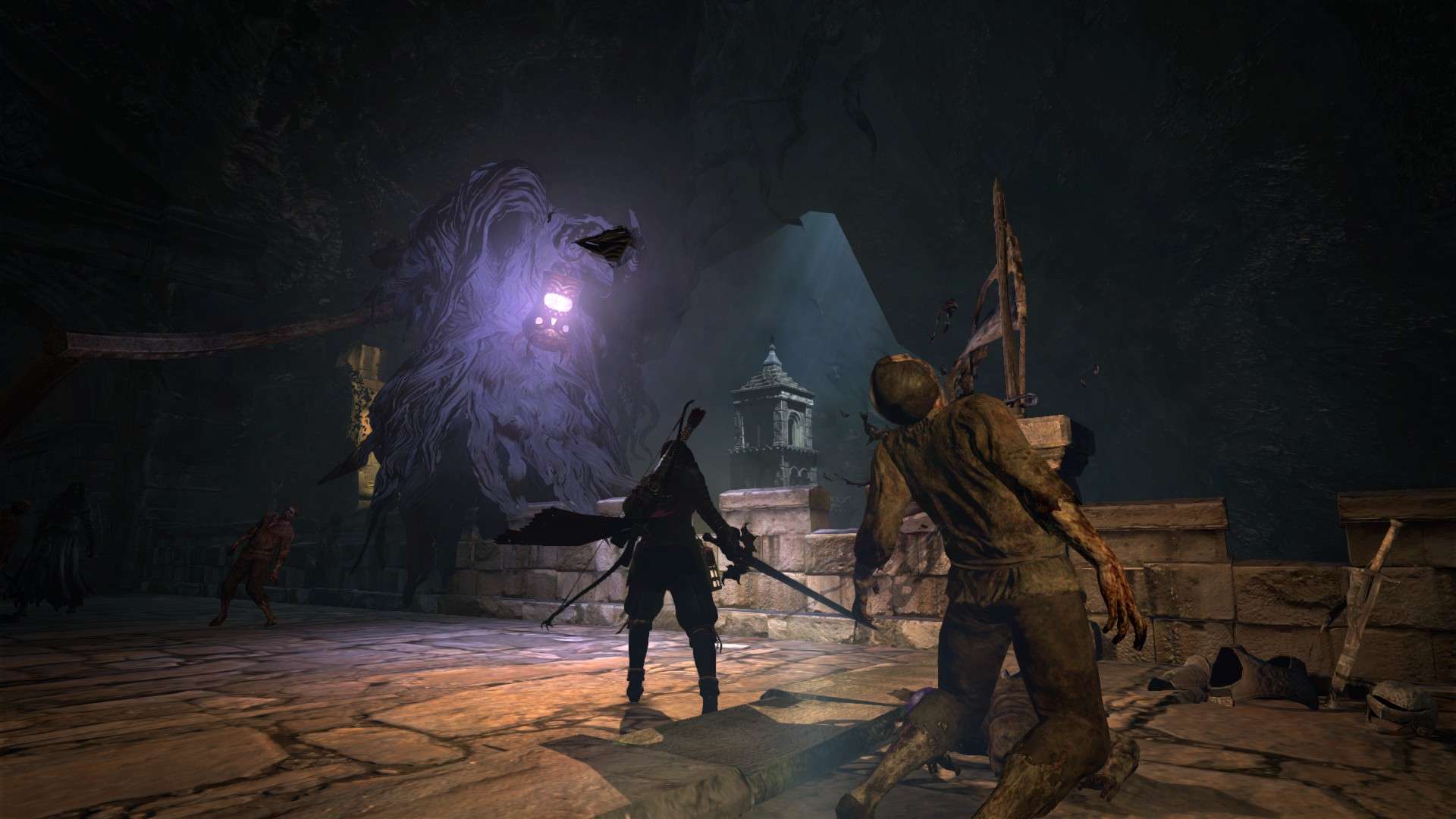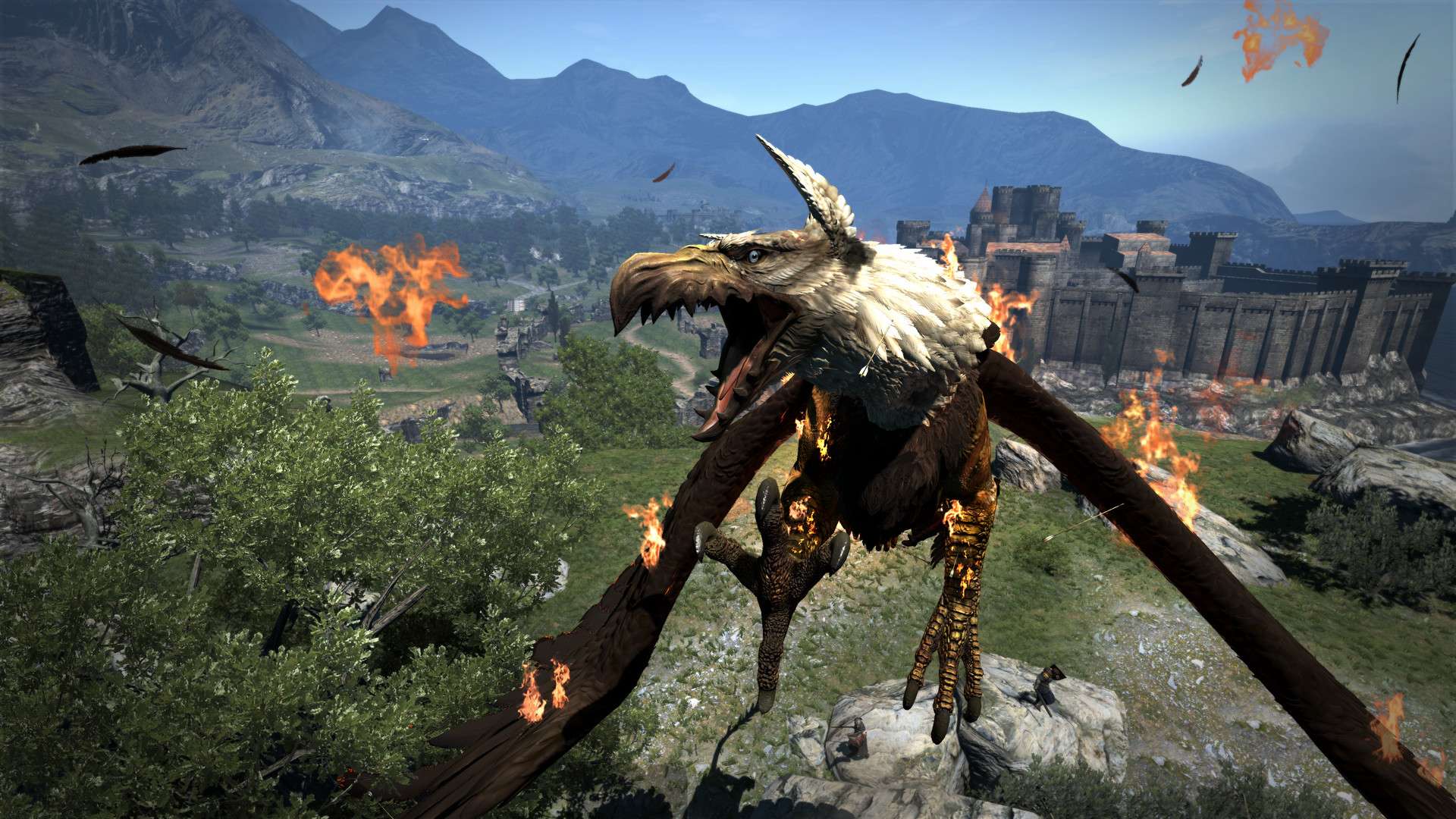
Dragon’s Dogma: Dark Arisen PC Review
I think it is fair to say Capcom’s support for the PC has been rather good. Most of its titles have come across to the platform with ports that have been given care, while supporting the many options the PC platform offers. Bizarrely, one game that I thought screamed “perfect for PC” was the refreshing RPG, Dragon’s Dogma. The game was a Japanese developed, Western-inspired RPG combined with an intriguing Pawn system and some of the best combat the RPG genre has probably seen, but it suffered heavily with performance problems on both the PS3 and Xbox 360, hitting sub 30 frames per second (fps) many times. Even after it gained an expansion pack in April 2013, Dragon’s Dogma seemed adamant to never come to PC…but nearly three years later after Dark Arisen, the game has finally arrived with a brilliant port that truly brings the best version of Dragon’s Dogma: Dark Arisen.
The story places the player in the boots of a created hero. The creation tools have enough power to create something that resembles a human, maybe even close to what you look like. It’s very similar in style to tool creations in The Elder Scrolls V: Skyrim or Dragon Age: Inquisition, but don’t expect going into this game with a character creator from some of the latest massively multiplayer online role-playing games that have those amazing detail character creators. Once your hero is created, they are going about their daily business when suddenly a dragon comes down from the sky and attacks their village. Trying all they can to protect their home, the hero is defeated by the dragon, who rubs salt in the open wound by pulling out the hero’s heart with his fingernail, leaving the words that you “are the chosen one” and challenges you to kill him after you arise from death as an “Arisen,” the title given to the chosen one who is tasked to save the world from the dragon with the power to summon and control special servants from “the Rift” that go by the name of pawns.
Dragon’s Dogma‘s story was never fantastic, and in a post The Witcher 3 world, the story shows even more weakness, mostly treading on familiar ground for most of the main game’s quest until the intriguing end part of the campaign. Anything to do with side quests is really just a notch on a list to gain more experience and gold, as these are extremely generic kill/fetch/escort quests. While it might not be doing much to refresh the fantasy setting, it’s the gameplay that is the true talking point of Dragon’s Dogma, and taking part in it throughout the open world of Gransys makes the weakness of the story not matter. Not every game can blow us away with a unique story, but it can at least make us interested in participating in it if the game itself is fun to experience, which is where the combat comes in.
I mentioned in my opening paragraph about the game’s great combat, and truly it is. People remember playing this game back on consoles solely because of it. It begins with the three starting vocations (think classes), Fighter, Strider or Mage. With two such well-known titles, you should be able to guess which one is based around heavy melee or sword and shields, quick melee or range damage, or uses powerful magic. A neat feature is that as you level up the class’ abilities, you eventually develop more complex classes that begin to cross over each other, creating an hybrid that unlocks potentially strong skills and gear. In my end game for the PC version, I was the Magick Archer, a combination of Strider and Mage, giving me powerful skills and magical arrows. And if you don’t like what you have become, spend some discipline points to change class. There is a freedom in Dragon’s Dogma to let players find what type of class suits them best without the need to start the game again with a fresh character.
Whatever vocation you decide to build around, it’s always best to follow up with pawns based on the other vocations. Being a Mage meant I needed a couple of fighters to keep the enemies away from me, while having a healer was handy to repair my fighters and myself. Every player has one main pawn companion, and just like the main character, you can create these with the character creator and pick their vocations (apart from the hybrids) and get them battling with you. Two additional pawns can be picked from the Rift, an area where random pawns exist within the game, but also where a collection of everyone else’s pawn creations can be uploaded online, then summoned by you to help along side you and your pawn. This cannot be abused, as high level pawns cost a lot of money to summon, so more often than not you will be hanging with a group of pawns around the same level as yourself.
If your pawn is picked to be used by another player, that pawn will retrieve information, knowledge and goodies when the user rests at the inn, giving an incentive to create a cool looking pawn that will standout from the rest to benefit the rewards gained from people using your servant. In an interesting twist, pawns that have more experience than yourself can give you hints about a quest they have already beaten that you might be currently on. It gives the pawns a living personality, a sense of community between AI and human, and while they probably talk too much for their own good, when they give an helpful hint, you’ll be happy you for the company exploring the open plains of Gransys. Having pawns is important at nighttime – Dragon’s Dogma has a day/night cycle, where night changes the world for the worst. More difficult enemies appear, who are looking for an ambush on any travellers stupid enough to wonder in the depths of darkness. The increase challenge of exploring at night often meant I was rushing to the inn to get a quick snooze to bring the sun back and wake up in a place that looked more fit for the living.
Pawns are remarkably capable in a fight. When I first played Dragon’s Dogma, I was expecting them to be a pain in the ass to keep alive or get them to do what I want, but they are self-efficient enough to fight well and keep you or teammates alive with buffs and healing. These adequate pawns assist in making battles exciting against the nasty beasties that prowl the lands. With a variety of pawns fighting by yourself, a fight can turn into a spectacle brawl of magic, arrows and hack-and-slash action. Combat is fast and each hit feels like it means something. Smashing a giant sword down on a griffin’s face as it charges at you and causing it to flip over is incredibly stimulating and rewarding to see, while raining down hell from the sky with a meteor bombing run on goblins (who are weak to fire) always gave me a smirk of destruction on my face. Each enemy is built with a specific way to be taken down, and while fighting the smaller enemies won’t be the battles that are burnt into your memories, they still require a tactical approach to defeat, making the player work for the win. It’s almost similar to the Souls games in that regards, but not quite as methodical in its design.
The ending to that last sentence shouldn’t matter though, as when your fighting the big critters, a Chimera, a Cyclops or a Drake, it’s clear that Dragon’s Dogma has its own engaging combat that keeps the player on their toes. Bigger enemies – although you can do it on small ones as well – gives opportunity to grab their body and climb them, using weapons to hack at their weak points, such as an Ogre’s eye to blind them or hacking at their legs to cause them to tumble to the ground. It’s a design that has been taken from games like Shadow of the Colossus, but masterfully built into the combat of an RPG to create tough, but exciting and memorable monster fights that are always hard to come away without breaking a sweat or being unharmed. The dangers aren’t limited to physical damage, there is the whole range of poison, burning, blindness and other elements that can cause an unhappy end to a fight, and with none of those casual helpful health regenerations to heal you after each fight, it’s back to the classic way of stocking up on correct supplies to counteract any debuffs that might fall upon you.
A true test of one’s combat experience does not come into fruition until you beat the game and begin to enter the Dark Arisen content. This follows after the game’s original ending and is a challenging environment named Bitterblack Isle that is located off the coast of the game’s original starting point, the seaside village of Cassardis. The place of Bitterblack Isle is contradictory to the game’s original open-world of Gransys. While Gransys often felt like an open land of occasional discoveries, it was mostly sterile until the evening, where the harder creatures began exploring the land, looking to get the upper hand on your party with a surprise attack. Bitterblack Isle on the other hand is a claustrophobic’s worst nightmare, as the setting is a set of closed-off linear dungeon corridors that forces players to go down into the depths and discover the nightmarish creatures that await them.
There is a lot of challenging encounters, which is why this content is aimed at people who want to test their might with the game’s combat engine against these tough-as-nails enemies. There’s also an unmistakable nod to Demon’s/Dark Souls within this eerie underground lair. A question of unease envelopes your body as you remain unsure about what lies around the next corner and what devilish tricks are concealed away. One of my first deaths in Bitterblack Isle was due to my unfortunate contact with a bogus chest that popped out some demonic worm that engulfed half of my body and continued to ravage my health. I was frantically shaking the stick to fill up the escape metre, but to no avail, as I was way underpowered to escape at that point. It’s a rude awakening to the difficulty spike of this expansion content, and it only gets harder the further you go down.
There is nothing wrong with Dark Souls-like difficulty, but the Souls franchise was made around intelligent design decisions and clever placement of enemies. The design of Bitterblack Isle falters at doing this, to the point where the designers thought the answer to making the game difficult is to jam-pack rooms with towering enemies and clog a player in these troubling situations. Even for experienced players, these situations will be annoying as your hero and their pawns are bombarded with attacks and curses, and seemingly can’t get a chance to do anything. Capcom recommend that the level entry be around 50, which is fine for the first third or an half, but once I crossed that point I found myself going back to Gransys to level-up more. I’d recommend bumping up your level to around 80 or 90 to comfortably get through most of Dragon’s Dogma: Dark Arisen.
That should not put anyone interested in the game off. Even if you don’t decide to continue to see the end of the Dark Arisen content, the main game is easily still worth the price of admission. Players also get the bonus of not having to suffer the original design of the ferrystones, limited teleporting crystals that were expensive to purchase before, are now free with the eternal ferrystone item, which means there is no longer the need to have to run backwards and forwards between key locations, and let me tell you, there is a lot of revisiting areas for quests in Dragon’s Dogma: Dark Arisen.
While the game isn’t going to win any graphical awards, the PC port has been handled well by Capcom. The visuals are given some spit and polish, thanks to the improved textures, the many resolution options, including the advertised 4k support and the ability to run the game at up to 150 frames per second (supposedly running more than that causes the game to break). The difference is night and day when compared to the original console release, and the fluidity of the game on PC makes combat a better experience. It also doesn’t take a beast to run, as the game scales well within its graphical settings, even an old card like the 560ti can give the game a decent run with most options on maximum.
Dragon’s Dogma: Dark Arisen to this day still remains a one of a kind game with some innovative ideas that you cannot find in any other RPG. With all the technical hiccups gone, packaged here is what marketing people would call the “Definitive Edition,” and for existing fans, all the improvements from running on PC hardware are alone worth a revisit to the world of Gransys. For anyone who has never played the game and is interested in western-style RPGs, then it is a no brainier that you should reward yourself by purchasing the game. Sure, the story might not be all that great, but all those amazing encounters will forever be engraved in your memory, and it feels right at home on PC. Also, maybe, with a new following of fans, we will finally get a sequel that I have been sat waiting for Capcom to green-lit since I finished the original game back in 2012. Do it Capcom! Let the dragon out, flying into free, just like the Dangan.






